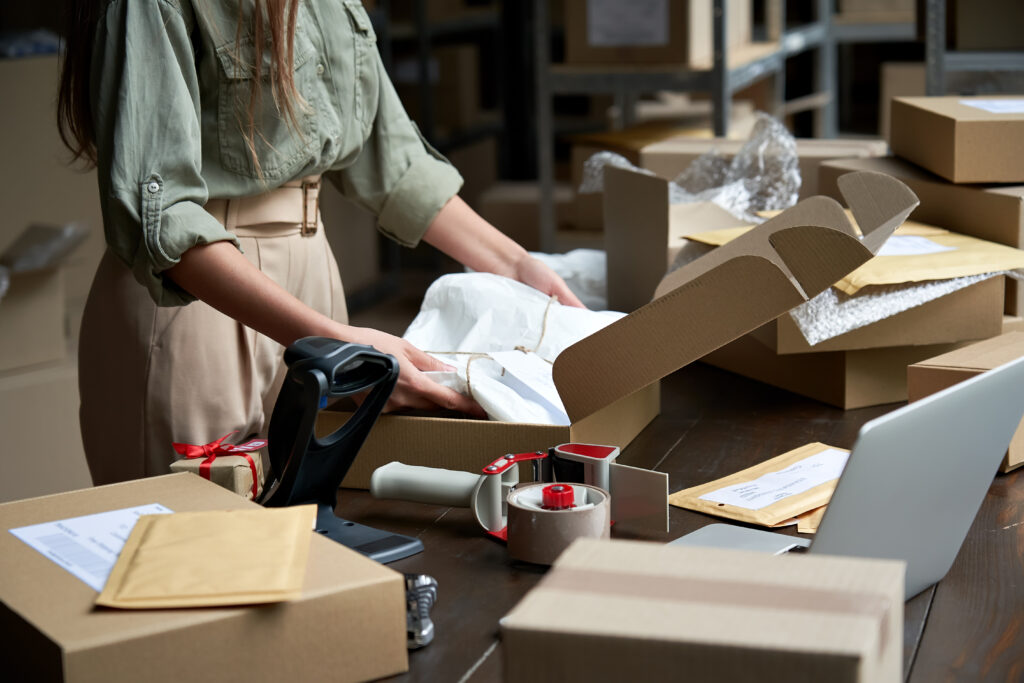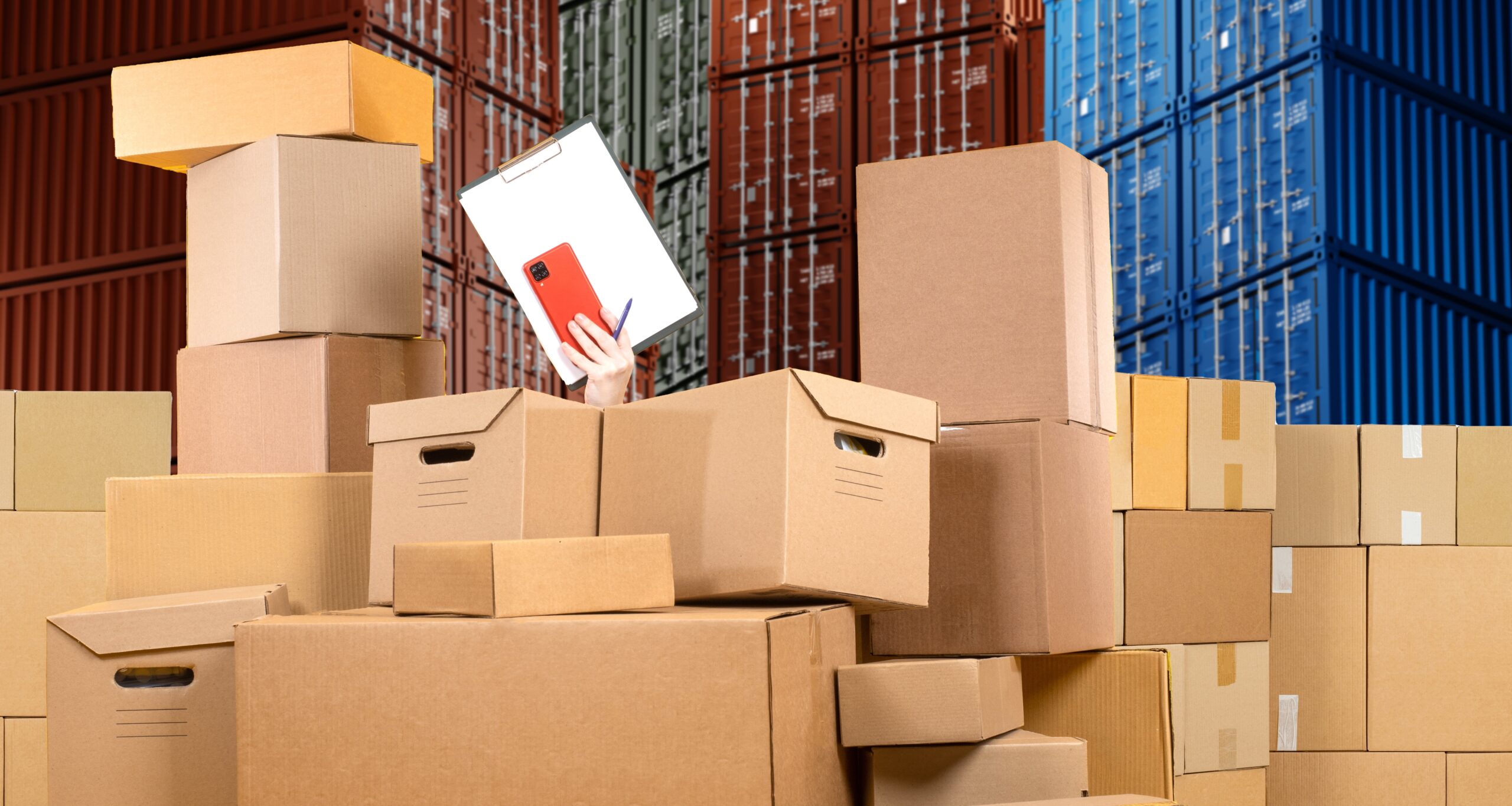At first glance, packing boxes in your garage or using a bargain-basement fulfilment provider seems like a smart way to protect your margins.
After all, why pay someone else to do a job you could handle yourself? The appeal of “cheap” fulfilment is undeniable as it promises immediate savings on paper.
But look a little closer, and you’ll discover the hidden costs that can hurt your business in the long run. In this blog, we’ll explore why keeping fulfilment in-house isn’t always the most cost-effective option.
Opportunity Cost: Your Time Is Money
When you run a business, time is your most precious resource. It’s not unheard of for a business owner to assume handling fulfilment personally is “free.” In reality, every hour you spend stuffing envelopes, printing labels, and making post office runs is an hour not spent on growing your business.
Think about it: product development, marketing campaigns, sourcing new products, engaging with customers: these are the tasks that drive revenue and growth. If you (or your team) are tied up for hours each day packing orders, those growth-driving tasks suffer.
Every second spent on logistics is precious time taken away from sales channels and marketing efforts that bring in more revenue.
The opportunity cost in terms of lost growth can be enormous… it’s hard to put a price on the big partnership you didn’t forge or the product you never launched because you were busy printing shipping labels.
The “savings” from not hiring a fulfilment service are dwarfed by the lost revenue from missed opportunities.

No Economies of Scale = Higher Costs per Order
Another hidden cost of cheap, in-house fulfilment is the lack of economies of scale. Third-party ecommerce fulfilment centres specialise in fulfilment, which means they ship high volumes of packages and leverage that volume to lower costs per package.
If you’re fulfilling on your own (or using a very low-budget provider), you’re likely missing out on these scale advantages. For example, large fulfilment companies often negotiate discounted shipping rates with carriers and can pass those savings on to their clients.
If you’re a small DTC brand shipping solo, you’ll likely pay retail rates for postage, which can be significantly higher. Over time, that extra money spent on every shipment add up and quietly chip away at your margins.
Economies of scale go beyond just postage. Packaging materials are another area where doing it yourself might cost more. A fulfilment center buys boxes, tape, and packing peanuts in bulk at wholesale prices; you might be grabbing bubble wrap from the office supply store at retail.
Similarly, a 3PL will have warehouse management systems, automation tools, and optimised processes that spread the cost across many clients. If you attempt to replicate that in-house, you face heavy upfront investments.
The bottom line: small operations simply can’t match the cost efficiencies of a scaled fulfilment operation.
The Skill and Efficiency Gap
Fulfilment is more than putting stuff in boxes. There is a whole science to inventory management, pick/pack workflows, and shipping optimisation.
If you don’t have the skill set or experience to do it efficiently, mistakes and inefficiencies will creep in, and they carry a cost. Operational errors like mis-picks, incorrect labelling, or delayed shipments can directly impact your bottom line.

Sending the wrong item to a customer means paying for return shipping or reshipping the correct item (not to mention the damage to goodwill). Lost or mis-logged inventory means you might run out of stock unexpectedly or over-order inventory you already have, tying up cash unnecessarily.
When fulfilment isn’t your expertise, you also tend to work more slowly and less systematically. A professional fulfilment centre might fulfil an order in a few short minutes using optimised picking routes and software-assisted packing slips.
An inexperienced operation could take double or triple the time per order, especially as the volume increases and the process doesn’t scale. As the saying goes, “if you think it’s expensive to hire a professional, wait until you hire an amateur”, or in this case, until you act as an amateur in a field outside your expertise.
The Customer Experience Factor
It’s no good saving money if you’re losing customers in the process.
Almost all your customers judge your brand by what happens after they hit “Buy,” and most will not give you a second chance if that experience is bad. So if “cheap fulfilment” means customers get their orders late, or get the wrong item, you’re potentially haemorrhaging future revenue.
A package that arrives a week later than expected, or a gift order that misses a holiday deadline, can turn a once-enthusiastic buyer into a one-time customer or even a detractor. The hidden cost of subpar fulfilment is lost lifetime value: the customer who never comes back, the negative review that scares off ten other potential buyers, the churn that forces you to spend more on acquiring new customers.

That one mistake might turn a profitable order into a loss when you factor in reverse logistics costs, and worse, it might turn a promoter into a detractor. Fulfilling on the cheap often correlates with cutting corners or stretching your team thin, which can lead to more of these mistakes.
To put it simply, customer experience is part of the true cost of fulfilment. If doing it cheaply means giving up on speed, reliability, or service quality, you have to account for the cost of brand damage and lost sales.
Brands who view good fulfilment not as an expense to minimise at all costs, but as an investment in customer satisfaction that pays back through loyalty and word-of-mouth. It’s a perspective worth considering the next time you think about squeezing a bit more savings out of your logistics budget.
Scaling Up Brings New Challenges
What works as “cheap fulfilment” in the early days can quickly break down as your business grows. Fulfilling 10 orders from your living room is one thing; fulfilling 1,000 orders per week from a small garage or single warehouse is quite another. One hidden cost of keeping fulfilment in-house is the difficulty of scaling efficiently.
As order volume increases, so do the complexities and potential costs. You might find yourself suddenly needing to hire extra staff to keep up with packing, or paying exorbitant overtime to your team during holiday rushes.

A classic scenario: a small skincare brand manages fine with in-house fulfilment for most of the year, but come November and December, orders triple due to holiday sales. The founder scrambles to get friends or family to help pack boxes, or hires temp workers.
This results in higher labour costs (temporary help often comes at a premium, and mistakes by untrained staff can rise), plus possibly needing to express-ship late orders to meet holiday deadlines (incurring high shipping fees). In contrast, a 3PL is built to handle seasonal surges… they have the staff and infrastructure ready, so you don’t have to pay to maintain that excess capacity year-round; you just pay for the orders you actually ship.
Scaling a business is challenging enough; doing it while also juggling the day-to-day of fulfilment can be downright overwhelming. It’s not unheard of for founders to feel like they are “drowning” in operational details when their brand takes off.
Focus on Value, Not Just Cost
At the end of the day, the decision of how to handle fulfilment comes down to understanding the true cost of each option. It’s crucial for DTC brands to look beyond the surface costs and consider the full picture.
While self-fulfilment or ultra-cheap providers might save a few euros today, the hidden costs, in time, missed opportunities, errors, customer churn, and scaling headaches, can end up far outweighing those savings
Thoughtful, value-based fulfilment means considering not just the price tag of a service, but the value it delivers.
Your time, your sanity, your customers’ satisfaction… these are valuable commodities that shouldn’t be sacrificed in the name of short-term savings. By focusing on long-term value over short-term cost-cutting, you set your brand up for sustainable growth.
Contact us today to find out how Autofulfil can help your brand reach its potential.

